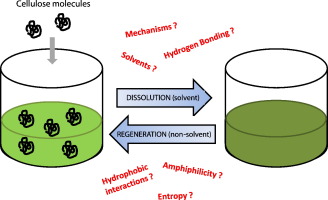Dissolving Process Study Guide
INTRODUCTION
Dissolution is a routine activity. We mix two substances to create a solution every day. For example, imagine your morning tea. You take sugar and put it in a liquid to create a sweet solution. Let’s learn about the science behind it.
WHAT IS THE DISSOLUTION PROCESS?
To understand dissolution, we must first understand the events that occur at the molecular level during the process. The reason that a solute dissolves entirely in a solvent depends on the nature and characteristics of the solute. Overall, we can find similarities in all the solutes.
It is a common saying in chemistry that “like dissolves like.” This phrase stems from the fact that a solute and a solvent must have similar intermolecular forces to form a solution. The first step in the dissolving process is introducing a solute to a solvent. The molecules of both these substances start interacting, and as a result, the solute molecules move away from each other and are surrounded by the solvent molecules.
The interaction between a solvent and a dissolved solute is termed solvation. When water is the solvent, the process is called hydration.
WHAT ARE THE DIFFERENT TYPES OF SOLUTES?
There are three types of solutes: molecular, ionic, and covalent. In the case of molecular solutes, when we introduce them to the solvent, the molecules separate and become surrounded by solvent particles.
When we introduce an ionic solute to the solvent, the independent ions of the molecules separate and are surrounded by the solvent particles in a process called dissociation, as occurs when dissolving a polar substance in water. The dissociation process causes the solution to conduct electricity, a unique property of soluble ionic compounds. Because of this property, ionic compounds are also known as electrolytes.
Strong electrolytes dissociate completely in a solution. Table salt, or sodium chloride (NaCl), is an example of a strong electrolyte. Weak electrolytes do not dissociate completely in a solution; hence, there are fewer cations and anions in the solution. Acetic acid is a popular example of a weak electrolyte.
Covalent solutes dissolve as individual molecules and do not dissociate in the solution, which is why they’re called nonelectrolytes. Table sugar is a famous example of a covalent solute.
Notes on the dissolution of gasses: It is crucial to understand that the solubility of gasses is affected by temperature and pressure conditions, so which methods would increase the solubility of gas? Gasses dissolve better at lower temperatures and high-pressure conditions.
CONCLUSION:
- Dissolution is when the soluble solute interacts with the solvent to create a solution.
- When solutes interact with the solvent, they move away from each other. The solvent molecules then surround individual molecules before they enter into a solution.
- Ionic solute compounds break into cations and anions upon contact with a solvent.
- The process of breaking into cations and anions is known as dissociation.
- Ionic solutes that dissociate completely are strong electrolytes.
FAQs:
1. Which is true about the dissolving process in water polar solutes?
When introducing ionic soluble compounds to water, they dissociate completely to form cations and anions. For example, sodium chloride breaks into Na and Cl-.
2. What is the dissolving process?
Dissolution is when the soluble solute interacts with the solvent to create a solution.
3. What happens to a substance when dissolving in water?
When particles of a solute interact with the solvent particle, they move away from each other. Solvent molecules then surround individual solute particles before entering into a solution.
4. What is the dissolving of water?
If the solvent used is water, the solvation is referred to as hydration.
We hope you enjoyed studying this lesson and learned something cool about Dissolution! Join our Discord community to get any questions you may have answered and to engage with other students just like you! Don’t forget to download our app to experience our fun VR classrooms – we promise it makes studying much more fun! 😎
SOURCES:
- Dissolutions: https://chem.libretexts.org/. Accessed 28 Feb 2022.
- Dissolving Process: https://www.ck12.org/c/chemistry/dissolving-process/plix/Dissolving-Process-55b6b1d9da2cfe5fb80e288f/. Accessed 28 Feb 2022.

